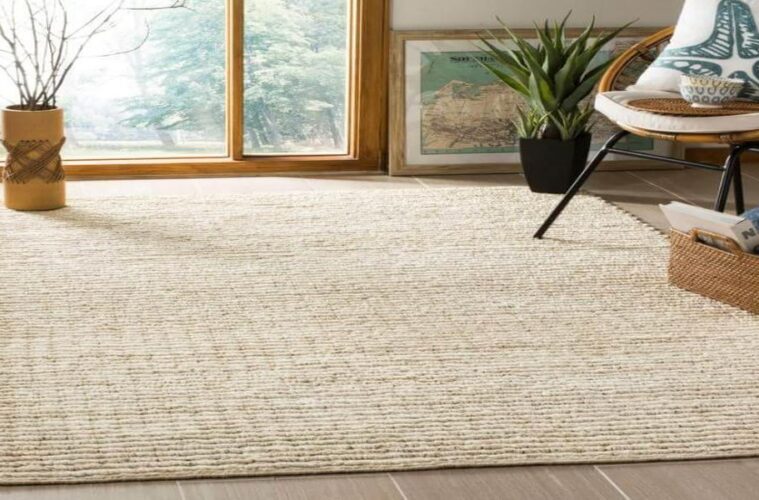Regular Cleaning: Start by removing loose dirt and debris from the carpet. Use a vacuum cleaner with a brush attachment to gently vacuum the surface. Make sure to vacuum both sides of the carpet to remove dirt trapped in the jute fibers.
Protect from Moisture: Jute is susceptible to moisture damage, so it’s crucial to prevent excessive exposure to water or humidity. Avoid placing jute carpets in high-moisture areas like bathrooms or basements. If you live in a humid climate, use dehumidifiers to control the moisture levels in your home.
Use Rug Pads: Place a rug pad underneath your jute carpet to provide cushioning and prevent slipping. Rug pads also create a barrier between the carpet and the floor, reducing friction and potential damage.
Trim Loose Fibers: Over time, jute carpets may develop loose fibers or frayed edges. Carefully trim these fibers with scissors to maintain a neat appearance. Be cautious not to cut into the carpet itself.
There’s Big Money In JUTE CARPETS
Growing demand: As more people become environmentally conscious and seek sustainable and eco-friendly products, the demand for jute carpets has been on the rise. Jute is a renewable resource that is biodegradable and recyclable, making it an attractive choice for environmentally conscious consumers.
Versatile and trendy: Jute carpets come in a variety of colors, patterns, and textures, allowing them to fit into different interior design schemes. They offer a natural and organic aesthetic that appeals to many homeowners and decorators. With the right marketing and design choices, jute carpets can cater to a wide range of customers.
Durability and longevity: Jute carpets are known for their durability and strength, making them suitable for high-traffic areas in both residential and commercial spaces. They can withstand regular wear and tear, making them a practical choice for consumers looking for long-lasting flooring solutions.
Export potential: Jute is primarily produced in countries like India and Bangladesh, where there is a long-standing tradition of jute cultivation. Exporting jute carpets can provide access to a wider customer base and potentially higher profit margins.
How To Start A Business With JUTE CARPETS
Create a Business Plan: Develop a comprehensive business plan that outlines your goals, target market, marketing strategies, operational details, and financial projections. A well-crafted business plan will serve as a roadmap for your business and help you secure funding if needed.
Set Up Your Operations: Determine whether you will operate as an online business, brick-and-mortar store, or a combination of both. If you choose a physical store, secure a suitable location and set up a visually appealing display area to showcase your jute carpets.
Determine Your Product Range: Decide on the specific types, sizes, and designs of jute carpets you want to offer. Consider variations such as plain, patterned, or printed jute carpets to cater to different customer preferences. Additionally, explore the possibility of offering complementary products like jute rugs or other eco-friendly home decor items.
Monitor and Adapt: Continuously monitor your business performance, sales figures, and customer feedback. Stay updated on industry trends and adapt your product offerings or marketing strategies accordingly. Regularly evaluate your financials to ensure profitability and make adjustments as needed.


